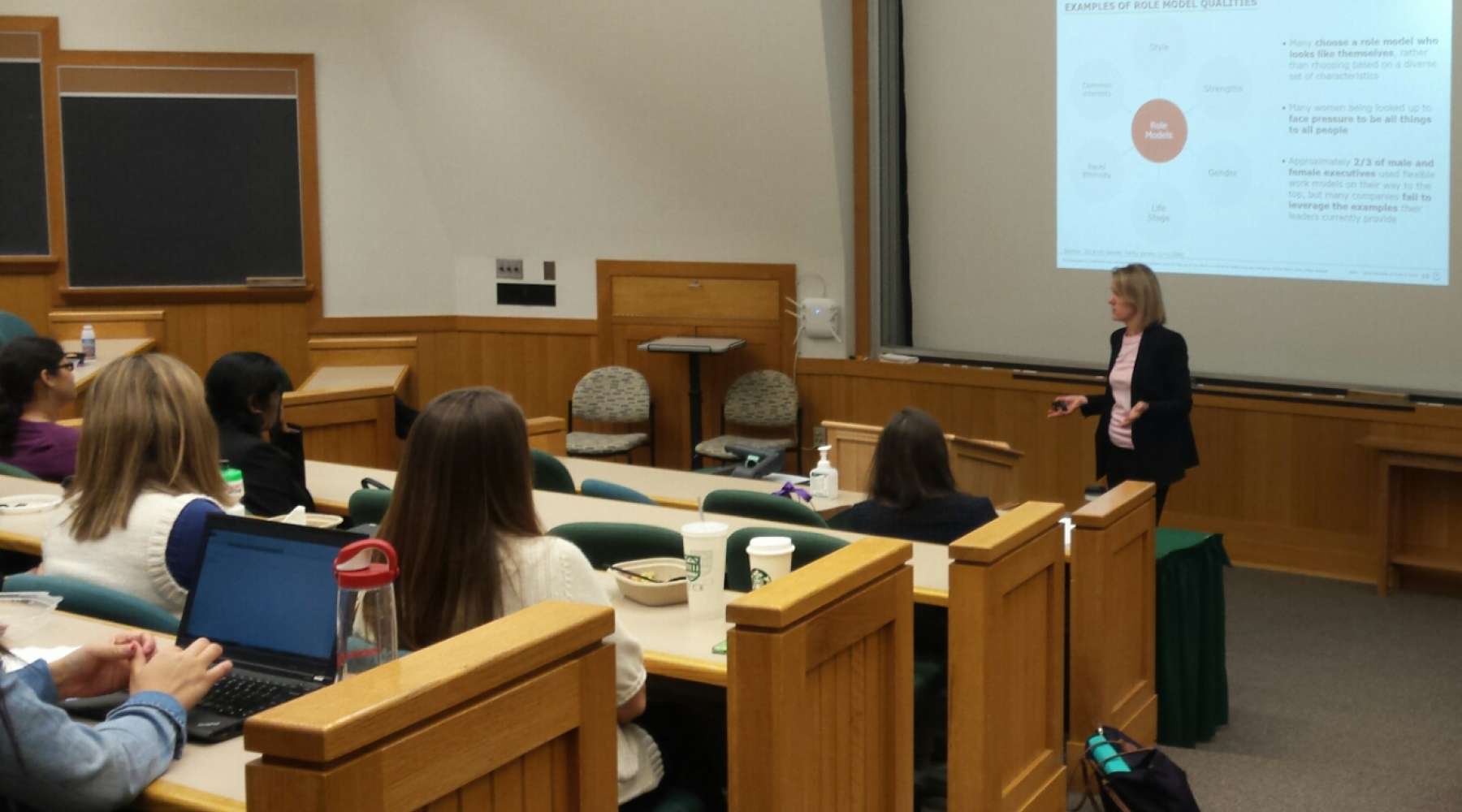
 Darci Darnell Bolenbaugh T’00 has been with Bain & Company since 2000. She has worked in Bain’s San Francisco, New York, London, and Chicago offices. In addition to her client-facing work at Bain, Darci has been a key contributor to Bain’s gender parity research.
Darci Darnell Bolenbaugh T’00 has been with Bain & Company since 2000. She has worked in Bain’s San Francisco, New York, London, and Chicago offices. In addition to her client-facing work at Bain, Darci has been a key contributor to Bain’s gender parity research.
For her keynote address during Tuck’s Initiative for Women speaker series, Darci Darnell Bolenbaugh T’00 delivered a talk on Nov. 13 describing how changes in the classroom, boardroom, and conference room are needed to move the needle on upping diversity in senior leadership.
Here are some selected highlights:
When we talk to our clients about gender parity, we describe it as a talent issue. Having a diverse set of people in your business who all feel individually respected by the company yields better employee engagement. When companies have employees who are engaged—who are eager to put their discretionary energy, creativity, and enthusiasm to work—the companies grow faster.
Women are the tip of the spear. Right behind them are men and dual-career couples and right behind them are millennials. The way you as a company celebrate heroes, the way you make the big decisions—hiring, promoting, placing—is paramount to being prepared for the next generation of talent.
Lack of gender parity is not a “mommy issue.” When I interviewed women who were truly “leaning in,” a lot of them are working moms. A lot of people like to explain it away by saying, “Well, women have babies; they leave; that disrupts their career.” The thing is: people who are inspired and ambitious make it work.
There are three things all successful leaders have in common: talent, aspiration, and confidence. And yet, when we surveyed more than a thousand MBAs who had been in their roles for several years, we saw a huge drop in the women’s aspiration and confidence.
There were three factors we identified impacting women. The first was how the “ideal worker” is defined. What we found is that women were much less likely than men to want to fit that ideal worker role—its emphasis on being high-profile and having little work/life balance conflicted more with their own definition of success.
The second was whether or not they had a supportive supervisor. Mentorship is important, but sponsorship is enormously more impactful on someone’s career. Men are significantly more likely to organically create these sponsorship relationship.
The third is role models. Personally, I don’t think you can find a single person who epitomizes everything you want to be, because we are all multifaceted individuals. We should look to multiple role models for a range of qualities, but the problem in today’s companies is that there isn’t a diverse range.
Here’s how companies can tackle these three issues. Front-line managers need to get to know people as individuals. They need to celebrate the balanced worker. They need to expand the definition of role models.
Encouragement is powerful. Women enter the workforce with plenty of ambition and confidence. Leaders must help them grow rather than wither.
The task of supporting and developing women is every line leader’s responsibility and is best accomplished through high-quality daily interactions.
There is no one-size-fits-all solution. Leaders must tailor behavior to the situation and individuals.
Getting it right in the conference room isn’t just good for women. It’s good for all employees and will enable companies to stay head of the curve on talent management.